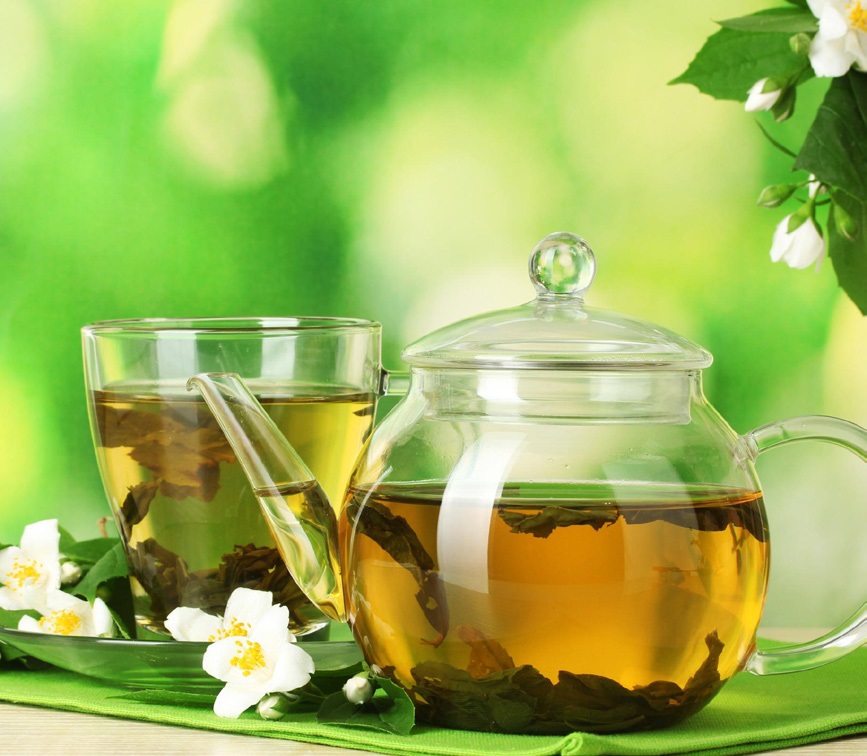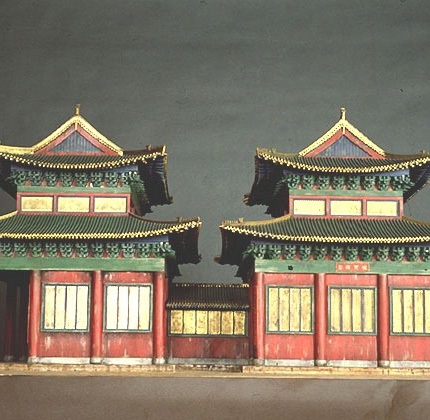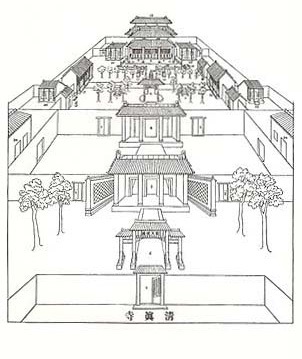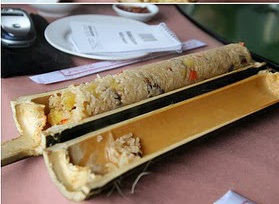
| What is Flavor and Fortune? |
| How do I subscribe? |
| How do I get past issues? |
| How do I advertise? |
| How do I contact the editor? |
Read 13041544 times
Connect me to:
| Home |
| Articles |
| Book reviews |
| Letters to the Editor |
| Newmans News and Notes |
| Recipes |
| Restaurant reviews |
| Article Index (all years, slow) |
| List of Article Years |
| Article Index (2025) |
| Article Index (last 2 years) |
| Things others say |
| Related Links |
| Log In... |
| Authors |
| Categories & Topics |
TOPICS INCLUDE: Tea’s popularity; Pan Xi restaurant; China’s first health-food place; Manchu-Han feast; Fortune cookie origins; Diseases are yin or yang; Dai ethnic minority; The Kaifeng synagogue; More about doufu; Kudos; Awards for the past
| by Jacqueline M. Newman |
Letters to the Editor
Fall Volume: 2019 Issue: 26(3) pages: 4 to 9
From Deh-Deh:
A friend just told me tea is not the most common
beverage in China; if not tea, which one is?
Deh-Deh: Your friend is correct; the most common
beverage in China is soup,
often quite watery and
sometimes called ‘thin soup.’
If is is from China’s North,
it commonly ends a meal;
if from near or below the
Yangzi River it might begin,
be in the middle, or even
end a meal.

There are other important beverages including those made of grains such as millet, rice, sorghum, or wheat, and if fermented might be called jiu. This is commonly translated as wine, its alcoholic content can vary, and during medieval times ‘burned’ or ‘roasted’ jiu was popular. Tea did not become popular until Tang Dynasty times.
Nowadays, there are many popular beverages and among the teas, Longjing tea often considered the best. Coffee consumption is growing, particularly in the Yunnan Province and by the country’s youth. Tea is more loved by the elderly, though all Chinese enjoy it and other beverages in local tea houses they frequent often.
From Mah in Japan:
Where in Hangzhou is the Pan Xi restaurant; and
what cooking techniques and dishes are most
popular there?
Mah: The web and every telephone directory says it is
in Hangzhou, some say across the street from the lake
and at 151 Longjin West Road, their telephone number:
86-2081721328. While we were there, one waiter
told us they use many cooking techniques from the
Guangdong Province, most Royal or Imperial Cooking
ways prepare their foods; but not everyone agrees. He
did say stewing was important as was cooking slowly
and gently in liquid; and he went on adding most foods
were not cooked directly over heat. We know that not
using high temperatures keeps nutrient content high,
foods most nourishing. Do read a soup recipe from
that restaurant in this issue on page 27.
Jong Bong asks:
Which is China’s first health food eatery?
Jong Bong: Many told us it is the Tongrentang
Imperial Palace in Chengdu, and that it opened in
1980 and makes foods based
on recipes from a pharmacy in
Beijing. Some said theirs is a
very extensive menu, maybe a
thousand dishes and for every
part of a meal or condition. It
is at Number 1 Zongfu Street,
and every taxi driver we spoke
to Hangzhou knew its address.
A few said if we go there, every
staff member knows every dish
and what it is for.
From Tom in NJ:
You wrote about a Manchu-
Han Feast some time ago, but
with little detail. Can you
provide more, and advise
when and where fortune cookies come from?
Tom: As to your first request, Manchu-Han meals
serve most dishes from the Manchu(rian) and Han
nationality populations; and they became popular
during Kang Xi and Qian Long imperial reigns during
the Qing Dynasty (1644 - 1911 CE). Some were two
separate events later combined into one. Some early
ones included one hundred and thirty-four courses,
those from the Manchu included beef, lamb ones
often from the Huihe River area. Later, others came
from south of the Yangzi River. Now these meals show
off the best of North and South China using cooking
techniques from both of them.
As to Fortune Cookie; many say they are more American than Chinese, and that David Jung, a Los Angeles noodle manufacturer should get credit for their development and early success. He borrowed an idea from Chinese rebels who exchanged messages in their buns, it caught on and now one company makes most of them, at least in the Eastern part of the US. Recently, they did contract with a Guangzhou company to make them with messages in Chinese and English, but were not successful in China. In the US, the largest company making and selling them uses the trade name ‘Golden Bowl’ and makes millions each and every week, some dipped in Chocolate to please the American sweet tooth.
From Larry:
How about an article about herbal, tea, and spices,
chopsticks, too?
Larry: Thanks for your e-mail. Readers like
knowing where writers come from, so in the future,
we hope all will advise where they live or are writing
from. As to herbs, they have been part of Chinese
diets since antiquity. In the US, its Congress, in 1958,
did pass a Food Additive Amendment Act for use in
the US, pass the Nutrition Labeling and Education Act
in 1990 for those needs, and the Dietary Supplement
Health and Education Act in 1994 for those. They
regulate all capsules, powders, gelcaps, softgels
and other health food and nutrition-related items;
and if you want information about them, go to:
https://ods.od.nih.gov/
to learn more
about them. As to tea, not always a dietary supplement,
it can reduce frequency of most chromatid exchanges
in vitro, and these free radical scavengers are useful
as drinking tea has a protective role in some diseases.
Alcohol, high-fat foods, and well-cooked red meats
have been associated with high cancer risks, green
tea no different if milk is added to it, as you and
others inquired. Spices have many roles, ginger, the
rhizome of Zingiber officinale, very popular worldwide,
turmeric related, and galangal and cardamon popular,
too. Spices can be buds, leaves, fruits, or other parts of
their plant with each one regulated differently. Many
have been used for thousands of years, suggested for
stomach aches, coughs, tonics, rheumatism, jaundice,
anemia, swellings, headaches, etc., and their specifics
can be and are very different.
Now, as to your last query about chopsticks, these Neolithic sticks, called kuaizi in Mandarin, were once known as zhu. They are best held one-third down from the top, thumb, index, middle and ring fingers placed on the upper stick, and it is best if both are even at their bottom end. Many tell us they express joy and good wishes, and Professor Zhao says for health reasons. add an extra pair at your table to pick up food from a communal plate. Each diner should use his or her own pair to move food into their own mouth. and, Please: Only one or two questions in a single letter.


Editor:
Do Chinese call some diseases ‘yin’
and others ‘yang’ and what body
organs do they represent?
William: Your letter, truncated above, asks about,
cancer and menstruation; both are yin conditions,
hangovers and hypertension yang ones. Resources
such as Wikipedia and other web sites provide much
information; please use it; and thanks for your queries.
Newman:
My wife is from the Dai ethnic population and seems
to know little about her food heritage; the computer
is of little help. Can you share some Dai dishes with
us and other readers?
Mr. Mercado: There is little information on the
computer about this ethnic population, few if any
recipes for their almost one and a half million people
in China. Most live in the Yunnan Province, love sour,
spicy, and crispy foods, and one Dai chap said his family
and other Dai can know
more than one hundred
different ones. As his
wife also lost contact
with family members
after coming to the US,
and as he is not Dai, he
says when he visited
her family in China, he
was served boiled sun-dried skin from cows that was
fried and delicious with a spicy sauce with charcoal-roasted
fish, piquant peppers, onions, cogon grass, and
glutinous rice cooked in bamboo tubes, etc.
 Can others
educate us about other Dai dishes beyond the sticky
rice that was a favorite,
as were eel dishes. He has no
information about other Dai foods except to tell us he
once read an article in China Tourism, but it had no
recipes, either.
Can others
educate us about other Dai dishes beyond the sticky
rice that was a favorite,
as were eel dishes. He has no
information about other Dai foods except to tell us he
once read an article in China Tourism, but it had no
recipes, either.
Flavor and Fortune did write an article about the Dai, but it had no recipes either, and it was in Volume 24. Go to the web index at www.flavorandfortune.com to read it.
Dr. Newman:
Was disappointed with no pictures or
information about the Kaifeng Synagogue at
the Diaspora Museum in Tel Aviv. Here are
two to share, and we hope you will publish
them.
Li Wang:
Wish we could include everything readers
suggest or send. We do thank you for the
pictures.
Betty on L.I. writes:
Thank you and others for their many queries.
This past issue was another lovely one and I did
particularly like the articles about Jews and the city
of Chengdu.
Betty: Thanks your and everyone’s letters ; we were
pleased so many liked these articles, as you did.
Dr. Newman:
We three guys wonder about the
origin of The Book of Songs, also the Records of the
Historian. What are they?
Sirs: The ancient Chinese classic called The Book
of Songs is the world’s oldest anthology; it has three
hundred and five items, some called verse, others said
to be songs. It was written in Western Zhou Dynasty
times or in the Spring and Autumn Period (1100 - 771
BCE, and 770 - 476 BCE, respectively), is divided into
Bi or simile and metaphoric types, Fu or narration
ones, and Xing or evocations of images remote from
their central subjects, and was compiled by Confucius
(551 - 479 BCE), though originally the collective effort
of musicians from the Zhou Dynasty court over five
hundred or so years, intended to inspire, communicate,
even admonish laboring people. One compiler’s son
said its three sections titled Feng, Ya, and Song did
became vehicles of protest.
The Records of the Historian was written by Sima
Qian and he was a historian who wrote about the Han
Dynasty (206 BCE - 220 CE). This important resource is
about ancient China’s three thousand years of political
and military life from the tribal era of the Yellow
Emperor to the reign of Emperor Wudi (156 - 87 BCE). It
is a series of biographies and essays about the movers
and shakers of their times written in one hundred thirty
sections and is about emperors, nobility, celebrities,
and ordinary folk and it stresses the complexities of
ordinary people, rulers, and human nature; and is a set
of books looking at China’s socio-economics, market,
and other regulations of its Dynasty, and the merchants
who amassed wealth making the right deals at the right
time. The author was the son of Sima Tan, the Grand
Historian of the Han Dynasty who took over his father’s
position and learned thanks to books and archives
in the Imperial library studying relationship between
man and Heaven and revealing forces behind history.
However, in 99 BCE, he did irritate Emperor Wudi and
was imprisoned and emasculated for doing so, then
was released and finished this book five years later.
In it he discusses astronomy, agriculture, finance, and
the arts, and this book is a major study about China’s
history and people.
Editor:
Your doufu article was good, but too short with too
few recipes. Many friends asked for more recipes.
In response: Our mailbox had many of these
requests; here are some of them.
| Making Doufu |
|---|
1 cup raw soybeans, soaked overnight with one cup cool water and 1 1/4 teaspoons magnesium sulfate, known as Epson salts.
1.Grind, then strain out the solids, then put them with
one cup cold water in a small pot and heat them at
180 degrees F for fifteen minutes.
|
| Doufu Soup |
|---|
½ pound doufu, rinsed with boiling water
1. Prepare the first three ingredients, and put them into
the broth and simmer for fifteen minutes.
|
| Vegetarian Stir-Fried Doufu |
|---|
1 Tablespoon vegetable oil
1. Heat a wok or fry pan, add the oil, and stir cabbage
and bok cai pieces for two minutes.
|
| Spicy Doufu |
|---|
1 Tablespoon solid shortening
1. Heat a wok or fry pan, add the oil, then stir in the soft
chopped bean curd, the furu, ginger, sugar, soy sauce,
and wine, and stir-fry for two minutes.
|
| Soy Beans, Long-Cooked |
|---|
1 pound fresh soy beans, the outer and inner shells discarded
1. Put all ingredients except the sesame oil into a pot,
stir well, then add one cup of cold water and bring this
to the boil, then reduce the heat and simmer covered
for forty minutes.
|
| Glass Noodles, Belly Pork and Puffs |
|---|
2 Tablespoons vegetable oil
1. Heat wok or fry-pan, add the oil, then the soaked
noodles and the mushrooms, for two minutes.
|
| Black Pepper Doufu |
|---|
1 cup vegetable oil
1. Heat wok or deep fry pan, add the oil, mix doufu and
the cornstarch and fry it in the very hot but not smoking
oil until lightly browned and crisp, then drain on paper
towels, and wash and dry the wok or fry pan.
|
| Frozen Bean Curd with Mushrooms |
|---|
3 small bok cai, each leaf’s length cut in half
1. Put bok cai in the bottom of a heat-proof casserole.
|
| Doufu-Stuffed Spring Rolls |
|---|
1 Tablespoon vegetable oil
1. Heat wok or fry pan, add the oil, then ground pork,
and stir fry this about one minute until the pork is no
longer pink.
|

Copyright © 1994-2025 by ISACC, all rights reserved
Address
3 Jefferson Ferry Drive
S. Setauket NY 11720